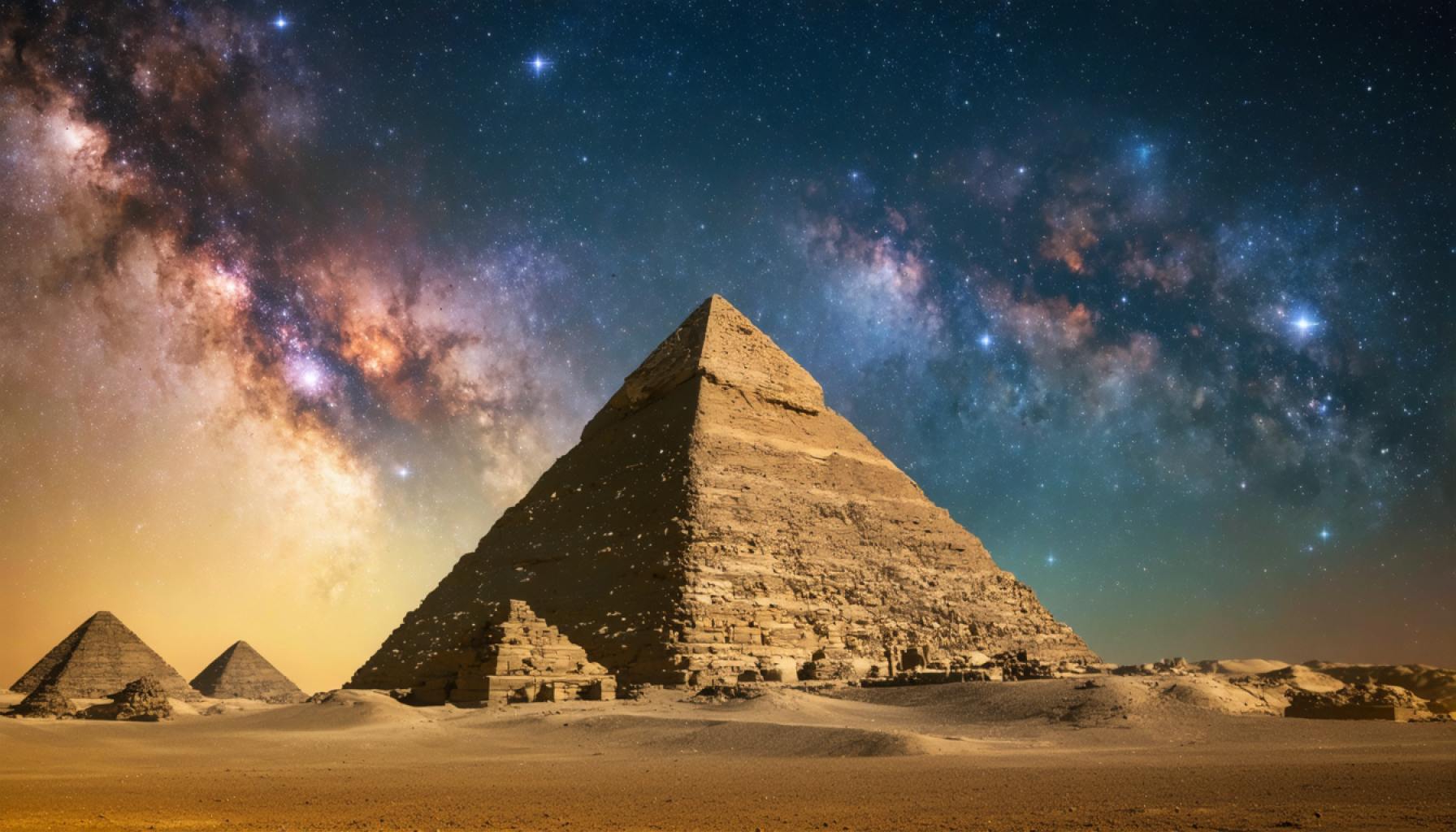- The new observatory on Mount Al-Rujum will be the largest in the Middle East, situated 1,650 meters above sea level to leverage South Sinai’s clear skies.
- Featuring a 6.5-meter primary mirror, the observatory aims to exceed the capabilities of the Kottamia Astronomical Observatory, which has been operational since 1964.
- The observatory’s remote location offers a pristine environment, free from light pollution, enabling deep-space exploration.
- Led by Dr. Hadia Selim, a team of scientists and technicians is meticulously preparing the site for advanced astronomical research.
- The project will integrate optical and radio astronomy, setting the stage for Egypt’s significant contribution to global astronomical studies.
- The initiative symbolizes Egypt’s ambition to establish a lasting legacy in celestial research and exploration.
Nestled within the stark grandeur of South Sinai’s rugged peaks, an audacious venture is unfolding atop Mount Al-Rujum—a colossal telescope set to propel Egypt into an astronomical renaissance. This cutting-edge observatory, poised to eclipse even the staunch legacy of the venerable Kottamia Astronomical Observatory, promises not only to be the largest in the Middle East but a harbinger of unprecedented celestial exploration.
When gazing into the cosmos, few places offer the pristine darkness and celestial clarity as Mount Al-Rujum, soaring 1,650 meters into the sky. It’s here, above trappings of urban encroachment, where Egypt stakes its future in the stars. Once completed, this observatory will supersede Kottamia, whose formidable 188 cm telescope has served as a stalwart sentinel since its inception in 1964 but now languishes amid Cairo’s creeping sprawl.
This new astronomical venture is not simply a replacement but a revolution powered by a formidable 6.5-meter primary mirror—potentially the largest eye ever cast into the Middle Eastern skies. Mount Al-Rujum’s isolation offers astronomers pristine vantage points, far from the tendrils of light pollution, allowing unhindered peering into the deepest cosmic pools.
The seeds for this stellar ascension were sown through meticulous groundwork, under the leadership of Dr. Hadia Selim and an elite consortium of scientists and technicians. Their mission: to meticulously measure, map, and transform this mountain summit into a launchpad for exploration. Explorers of the cosmos have installed testing equipment to scrutinize atmospheric conditions with precision, ensuring it’s the ideal locale for unfurling the secrets of the universe.
Over the next two years, a chorus of instruments will hum voraciously, gathering insights, laying the groundwork for a comprehensive astronomical city. This ambitious hub will blend optical innovations with radio astronomy, a nod to the symphony of global technological strides.
The stakes are cosmic in scope. With its inaugural gaze set for the heavens, this observatory strives not merely for discovery, but for Egypt’s definitive imprint upon the stars—where time-stamped legacies of Kottamia fade, yielding to a future where Egypt’s gaze, sharpened and unyielding, dances on the edge of the infinite.
This isn’t just about peering at stars. It’s about writing Egypt’s name amongst them.
The Celestial Leap: Egypt’s New Astronomical Giant Set to Transform Stargazing
Key Features and Specs of Mount Al-Rujum Observatory
1. Primary Mirror Size: The new observatory boasts a remarkable 6.5-meter primary mirror, rivaling some of the largest telescopes in the world. This feature positions it as the largest in the Middle East, offering unprecedented clarity and depth in astronomical observations.
2. Optimal Location: At an elevation of 1,650 meters, Mount Al-Rujum provides a location free from light pollution and atmospheric interferences, making it an ideal site for an astronomical observatory.
3. Technological Advancements: Equipped with cutting-edge optical and radio astronomy technologies, the observatory will utilize adaptive optics to correct for atmospheric distortions, ensuring precision in celestial imaging.
Industry Trends and Future Potential
– Middle East Astronomy Boom: With several Middle Eastern countries investing in space research and technology, this observatory could play a pivotal role in regional collaborations and advancements in space science.
– Potential Collaborations: There is a promising opportunity for partnerships with international space agencies and observatories, fostering shared research programs and technology exchanges.
How to Maximize Your Experience?
For astronomy enthusiasts and professionals looking to engage with the new observatory:
– Stay Informed: Follow announcements from the Egyptian government and international astronomy organizations about public viewing opportunities and collaborative research initiatives.
– Educational Tourism: Once operational, the site might offer educational tours and workshops. This could be an excellent opportunity for students and teachers to witness cutting-edge technology and research first-hand.
Limitations and Challenges
– Financial and Logistical Hurdles: Large projects like this often face budgetary constraints and logistical challenges, such as transporting and installing massive components in remote areas.
– Maintenance and Expertise: Ensuring the availability of specialists for maintenance and operations might prove challenging. Continuous training and collaborations with international experts will be necessary to maintain the observatory’s cutting-edge status.
Actionable Recommendations
– Engage with Local Astronomy Societies: They often hold events and discussions pertaining to significant developments in the field, providing insights and awareness about the observatory’s progress.
– Virtual Observation Opportunities: As technology advances, virtual reality and online platforms might offer remote access to observations made at Mount Al-Rujum, making it accessible to a global audience.
Related Links and Resources
For further information and to explore more about astronomical observatories and Egypt’s advancements in this field, visit the [NASA](https://www.nasa.gov) or [International Astronomical Union](https://www.iau.org) websites.
With the launch of the Mount Al-Rujum Observatory and its state-of-the-art features, Egypt is poised to carve its name into the annals of astronomical history, guiding both local and international communities toward new horizons in celestial exploration.
